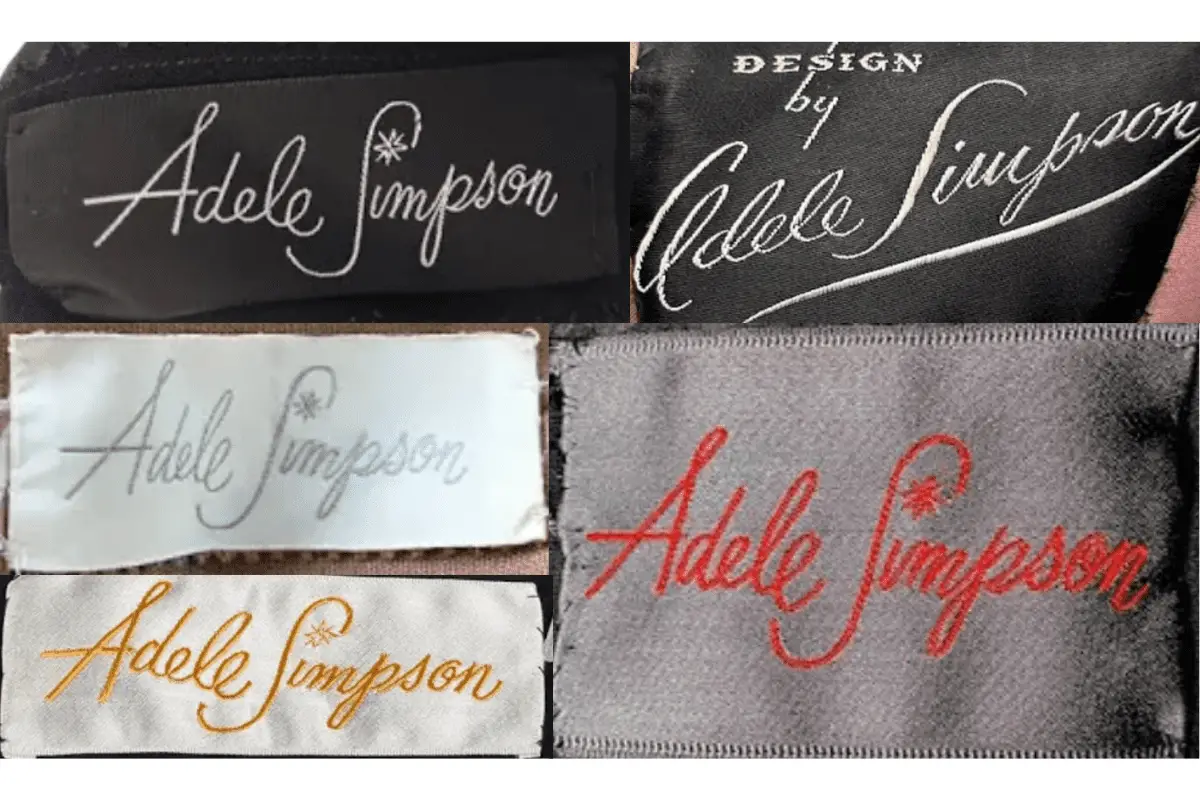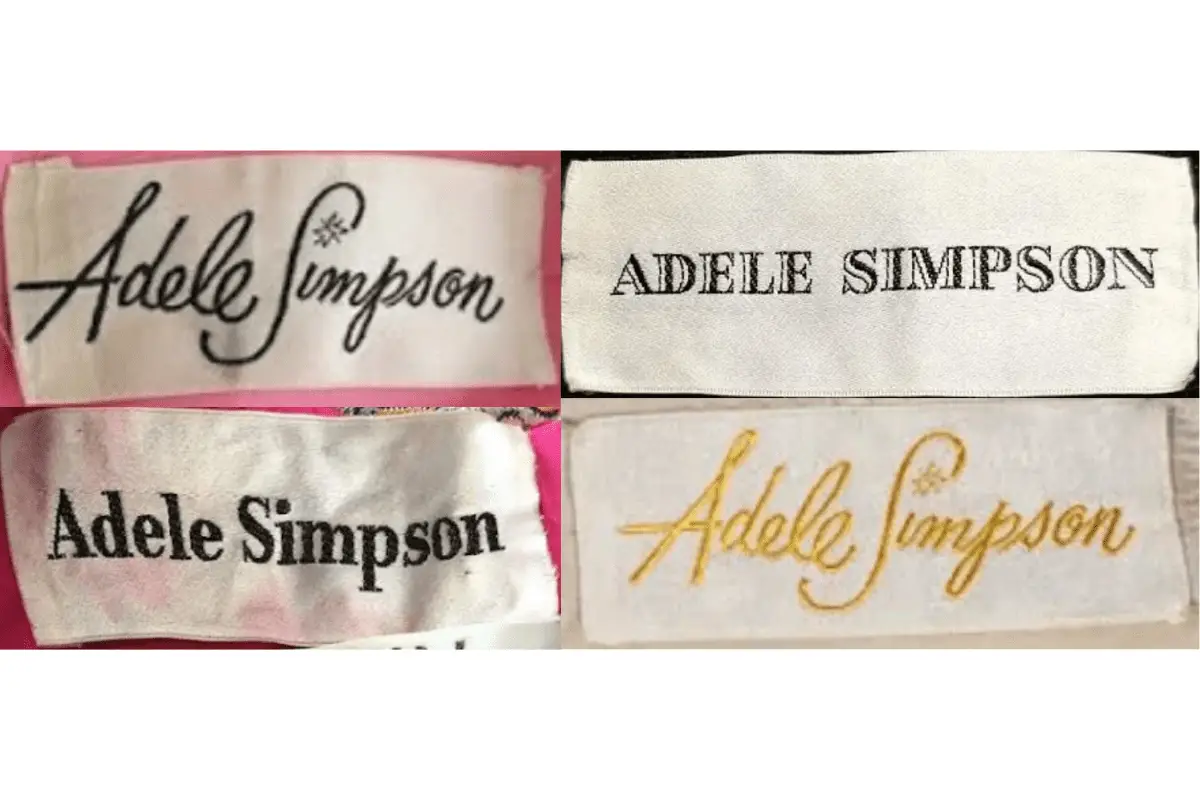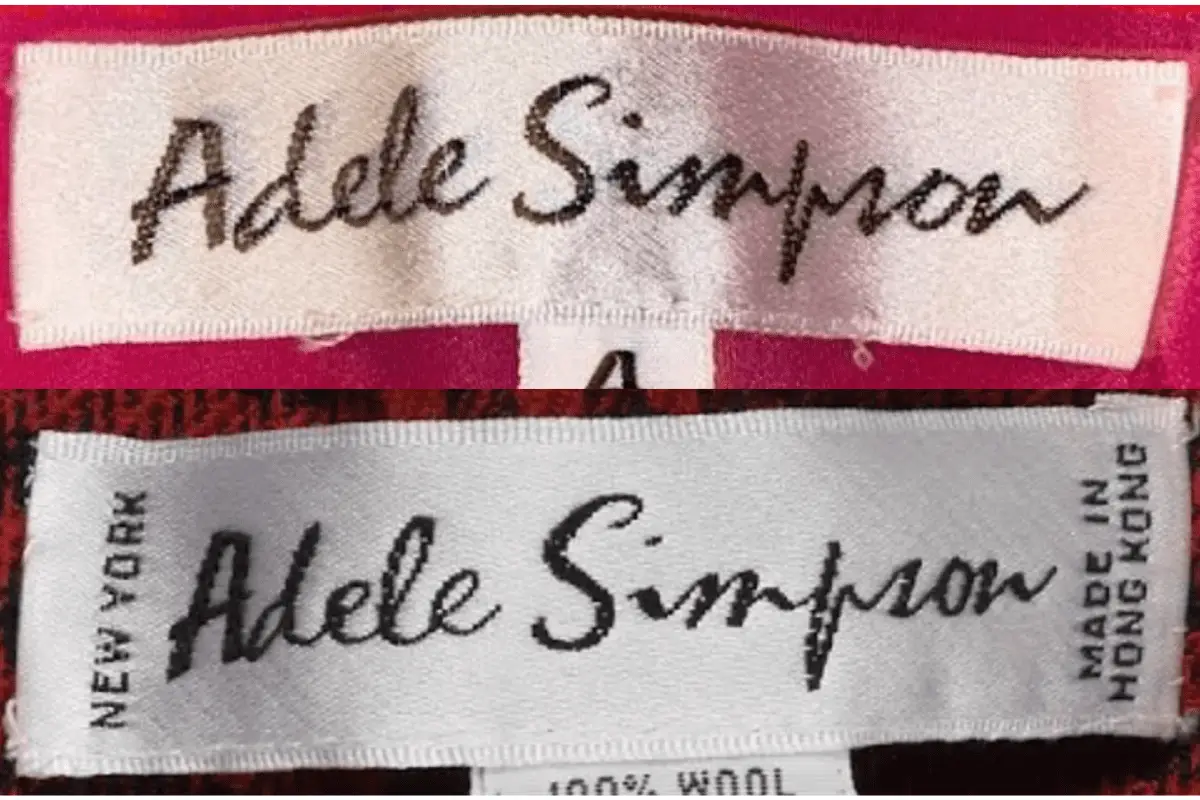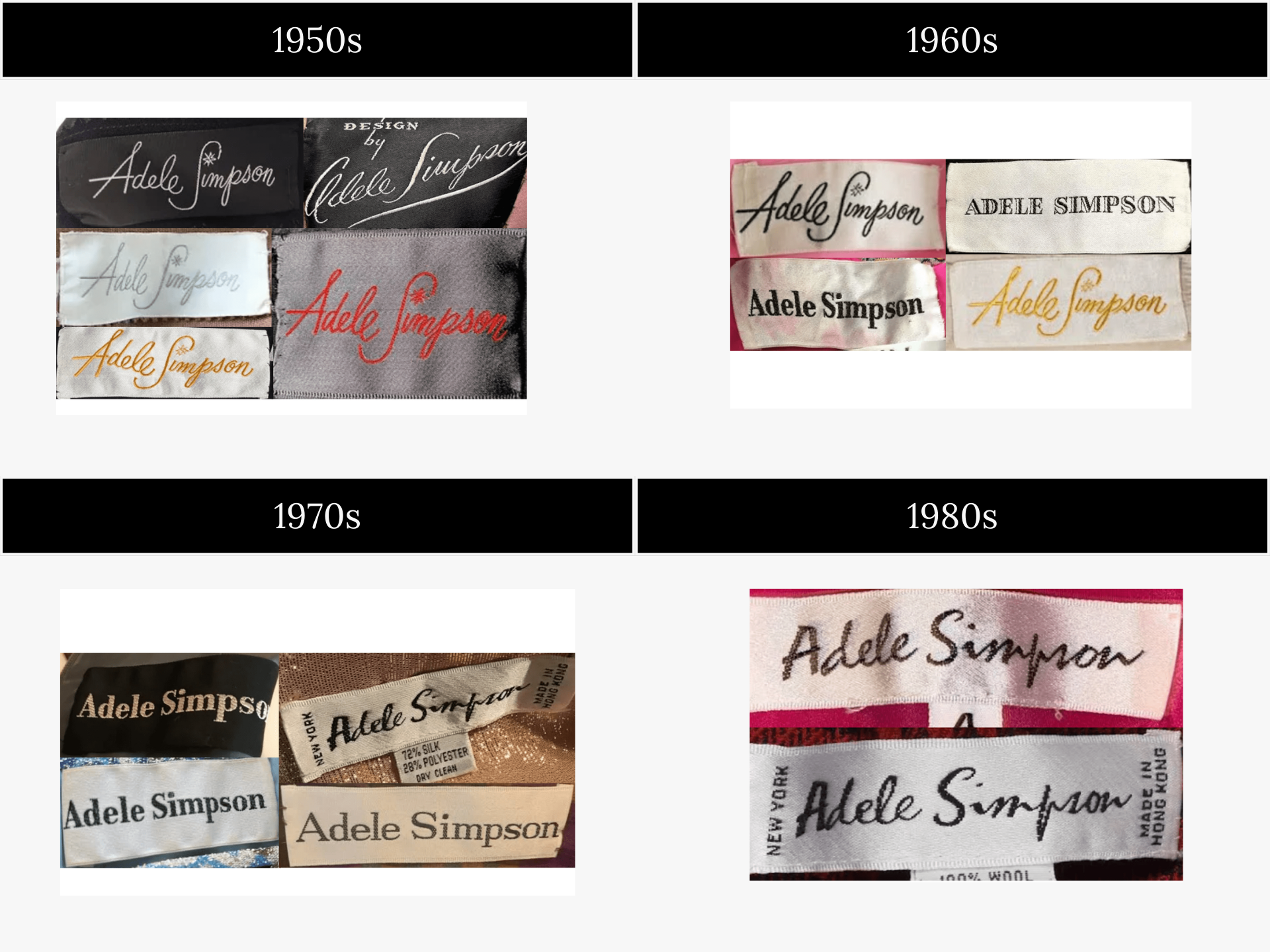Adele Simpson, a trailblazing American fashion designer, left an indelible mark on the world of fashion over nearly five decades. Born Adele Smithline to Latvian immigrant parents, she began her illustrious career in New York’s bustling Garment District. Simpson’s early career saw her blending the elegance of French couture with the practicality of American ready-to-wear fashion, a fusion that defined much of her work. In 1949, she launched her own label, Adele Simpson Inc., which quickly became synonymous with refined, accessible fashion. Her medium-priced line, which debuted that same year, catered to women who sought sophistication without the prohibitive cost of haute couture. Over the years, her designs would go on to grace the racks of esteemed department stores like Saks Fifth Avenue and Bonwit Teller.
Simpson was widely celebrated for her innovative use of fabrics, particularly cotton, earning her numerous accolades such as the 1946 Neiman Marcus Award and the inaugural Cotton Council’s Cotton Fashion Award. Her mastery in transforming everyday materials into stunning cocktail dresses helped redefine the boundaries of American fashion, bringing high fashion into the homes and wardrobes of everyday women. First Ladies, including Lady Bird Johnson, Pat Nixon, and Barbara Bush, proudly donned her designs, cementing Simpson’s status as a key figure in American fashion history.
Simpson’s designs were also deeply influenced by her travels and her keen eye for international trends. From Japanese silk prints to sari fabrics, her collections often drew inspiration from cultures around the world, which she skillfully incorporated into her designs. This global perspective, combined with her dedication to quality and wearability, solidified Adele Simpson’s legacy as one of the most influential designers of her time, whose work continues to be celebrated in vintage fashion today.
60s Fashion in London’s King Street
How to tell if Adele Simpson is vintage from the logo
Adele Simpson’s logo has evolved through the decades, reflecting different eras of fashion and branding. While the brand has retained the elegant and personal style of the signature, subtle changes in typography and design help determine the era in which a piece was created. Below is a guide to identifying Adele Simpson vintage clothing based on the logo.
1950s Adele Simpson logo
- The logo from the 1950s features a clean, blocky font.
- This is a typewritten style, with a classic and simple serif look.
- The logo’s straightforward appearance reflects the post-war era’s focus on elegance and minimalism in fashion.

1950s Adele Simpson logo
1960s to 1970s Adele Simpson logo
- The logo from the 1960s to 1970s introduces a more cursive, flowing script.
- It has a more personalized and hand-written feel, adding a touch of sophistication to the brand.
- The letter “S” in Simpson is accentuated with a small star, creating a signature look that was typical of fashion logos in this era.

1960s to 1970s Adele Simpson logo
1970s to 1980s Adele Simpson logo
- The logo from the 1970s to 1980s keeps the cursive style, but with a slightly more informal and free-flowing appearance.
- The handwriting is less structured compared to the previous decades, reflecting the fashion trends of the 1970s and 1980s.
- This logo emphasizes the brand’s shift towards more casual and expressive designs during this time period.

1970s to 1980s Adele Simpson logo
How to tell if Adele Simpson is vintage from the tags
Adele Simpson, a prominent American fashion designer, had a career that spanned several decades. Her labels evolved over time, reflecting the trends and changes in the fashion industry. From the elegant cursive fonts of the early years to the more modern, clean lines seen later on, Adele Simpson’s tags provide insight into the era in which the garment was made. Below is a breakdown of how to identify vintage Adele Simpson clothing through the tags based on the decades attached.
Need assistance with vintage tags or labels? Upload a picture on our vintage tag identification page, and we’ll help you out!
1950s vintage Adele Simpson tags
- Classic and elegant cursive fonts, often with a star symbol next to the “S” in Simpson.
- Tags are typically white or off-white, with black or gray embroidery.
- The overall design is understated and timeless, often with no additional information like country of origin or fabric content.

1950s Adele Simpson tags
1960s vintage Adele Simpson tags
- Continuation of the cursive font, but with slightly bolder lettering.
- Tags may include additional text such as “Design by Adele Simpson” in some cases.
- Tag colors tend to remain neutral, focusing on black or white backgrounds with black or contrasting lettering.

1960s Adele Simpson tags
1970s vintage Adele Simpson tags
- The iconic cursive font remains but is sometimes larger and more pronounced.
- Tags often feature the star symbol prominently next to the “S” in Simpson.
- Introduction of some color in the tag embroidery, with red or yellow being used instead of the traditional black or gray.

1970s Adele Simpson tags
1980s vintage Adele Simpson tags
- Tags evolve to feature a more modern font, though cursive is still used in many cases.
- Occasional use of block lettering alongside the classic cursive, signaling a more contemporary shift.
- Tags begin to include additional details like fabric content and place of manufacture (e.g., “Made in Hong Kong”).

1980s Adele Simpson tags

Adele Simpson Tags by Year




Thank you for your sharing. I am worried that I lack creative ideas. It is your article that makes me full of hope. Thank you. But, I have a question, can you help me?
Your point of view caught my eye and was very interesting. Thanks. I have a question for you.